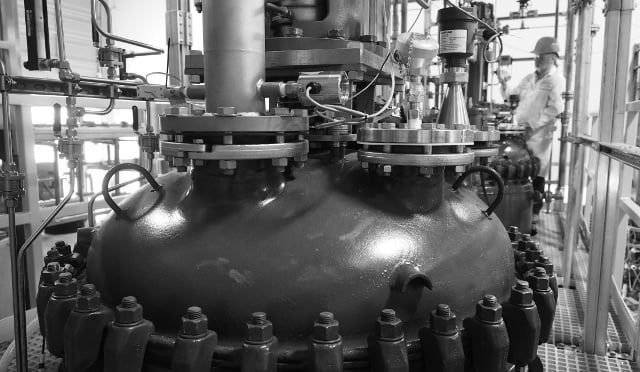Nano One Materials Corp. TSX:NANO has taken a significant step toward scaling up production of lithium-iron phosphate (LFP) cathode materials, completing a front-end engineering and design (FEED) study and approving a financial investment decision to expand its Candiac, Québec facility to at least 800 tonnes per year.
The Vancouver-based cleantech firm, which has developed a patented One-Po process for producing battery cathode materials, said the move marks a key milestone in its commercialisation strategy and will reduce operating costs by roughly 50 per cent through process automation and integration.
At the heart of the expansion is a newly installed, proprietary agitator in Nano One’s full-scale reactor, which boosts throughput by around half while improving product consistency and energy efficiency. “These enhancements demonstrate the scalability and economic advantages of our One-Pot process as we prepare for commercial production,” the company said in a statement to the market this week.
The FEED study has outlined a two-phase expansion. The first phase, now approved, will integrate and automate existing commercial-scale equipment to reach an initial 800-tonne annual capacity. A second phase could increase capacity beyond 1,000 tonnes, supported by new automation and feedstock handling systems. Commissioning of the expanded facility is targeted for the first half of 2027.
- Podcast: How Nano One is helping decouple batteries from China
- Nano One secures C$5m boost to accelerate homegrown battery breakthrough
- Nano One and Rio Tinto advance collaboration to secure battery supply chains
The company reported total net assets of C$16.5mn and working capital of C$16.6mn as of 30 September 2025, with cash reserves of C$17.8mn. It raised C$0.2mn through an at-the-market equity offering by the end of September, with a further C$2.4mn raised in October.
In October, Canada’s Natural Resources Ministry (NRCan) awarded Nano One a C$5mn non-repayable contribution under its Energy Innovation Program to support the Candiac expansion. The funding, which runs through March 2027, will help scale production of One-Pot LFP materials and strengthen domestic battery supply chains. It builds on prior support from the Quebec government and the US Department of Defense, aligning with G7 objectives for industrial resilience and regionalised critical minerals supply.
Podcast: How Nano One Is Breaking China’s Grip on the Global Battery Supply Chain
What role will Nano One’s Candiac site play?
The Candiac site, retrofitted with One-Pot reactors in 2023, currently produces up to 200 tonnes annually and supports process development and early commercial validation. The facility will serve as a hub for pilot production and demonstration for defence and energy storage clients while underpinning Nano One’s licensing opportunities in the automotive and AI data centre markets.
Strategically, Nano One continues to deepen partnerships across the global battery ecosystem. In September, Sumitomo Metal Mining confirmed Nano One as a key technology partner in advancing LFP cathode commercialisation. The collaboration follows successful trials and intellectual property reviews that validated the company’s One-Pot process.
Nano One also announced progress with Rio Tinto on pre-qualifying multiple sources of lithium carbonate from the mining major’s Argentine operations, part of an effort to de-risk supply chains for prospective licensees. The pre-qualification programme could accelerate customer acceptance and shorten testing timelines by as much as a year.
Further patents added
Meanwhile, the company continues to expand its intellectual property portfolio, adding five patents this year across North America and Asia, covering innovations in LFP, nickel manganese cobalt (NMC) and lithium nickel manganese oxide (LNMO) cathode chemistries. The new patents bring Nano One’s global portfolio to 52 granted, with 54 applications pending.
“Between growing strategic partnerships, a strengthened patent base, and increasing government support, Nano One is establishing itself at the centre of North America’s clean energy supply chain,” said chief executive Dan Blondal. “The Candiac expansion positions us to meet rising demand for sustainable LFP materials while advancing Canada’s industrial leadership in battery innovation.”






















Comments (0)